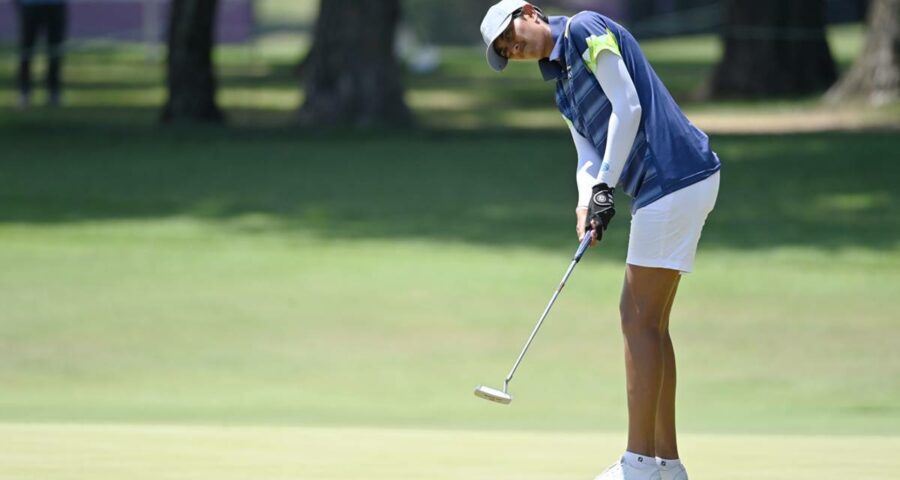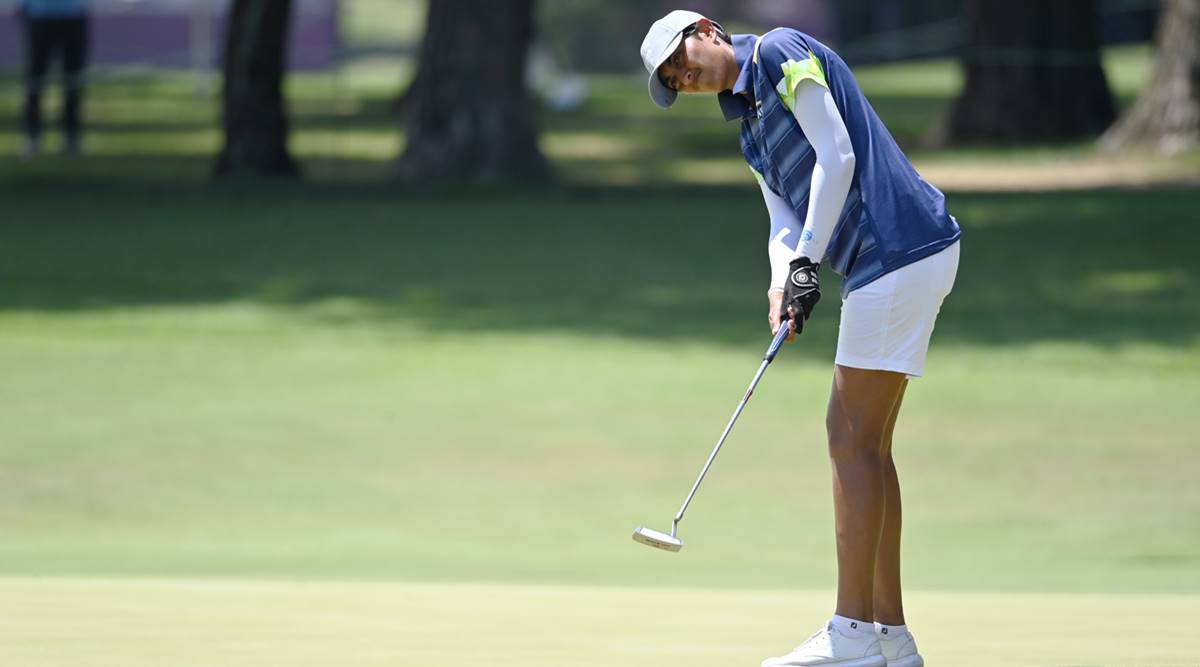At the end of Day 3 in the four-day event, she sits in second place, holding a two-stroke advantage over joint-third-placed players World No. 11 Lydia Ko and World No. 17 Hannah Green.
In all the pre-Olympic predictions made by sports panellists, experts, officials and fans alike, Aditi Ashok’s name never cropped up as a medal contender. This is her second Olympic Games, after she finished 41st in the women’s individual golf event at Rio 2016. But the experience she gained in the interim, and the three professional tournaments she won since then, was overlooked. At 23, she’s floated under the radar. And when she travelled to Tokyo, she stayed in the shadows of the highly-rated shooters and wrestlers et al.
Now she’s creeping in on a historic silver medal.
Generally media-shy, in a silent corner of Tokyo, at the Kasumigaseki Country Club (around 57 km away from the Olympic Stadium), Aditi has quietly worked up a storm on the course. At the end of Day 3 in the four-day event, she sits in second place, holding a two-stroke advantage over joint-third-placed players World No. 11 Lydia Ko and World No. 17 Hannah Green. Away from the hustle and bustle of the Games, the youngster is ahead of four of the top 5 ranked women golfers today. She trails only World No. 1 Nelly Korda of the United States by three strokes.
The Bangalore native is currently ranked no. 200 in the world but was placed 45th in the list of players eligible to compete at the Games. That’s what makes her current position even more spectacular.
“Granted that each country is allowed to send only a few athletes so not all the big names have come, but the field is still full of big names that she’s so far done better than,” says golfer Amit Luthra, the 1982 Asian Games gold medallist. “You have to have a great deal of self-confidence and a strong mentality to be doing such a thing at such a stage. There are bigger events in golf, but when it comes to the Olympics, everybody is watching and there’s that much more pressure.”
https://youtube.com/watch?v=xSr-e__wx44%3Fversion%3D3%26%23038%3Brel%3D1%26%23038%3Bshowsearch%3D0%26%23038%3Bshowinfo%3D1%26%23038%3Biv_load_policy%3D1%26%23038%3Bfs%3D1%26%23038%3Bhl%3Den-US%26%23038%3Bautohide%3D2%26%23038%3Bwmode%3Dtransparent
Long quest
There are still 18 holes that separate the Indian from what will be the most unlikely of medals – but not undeserved. After all, her Olympic quest had started nine years ago, when she got to know the sport had been included in the Olympic roster.
“I found out in 2012 that golf would make its return (to the Olympics) after 112 years (at Rio 2016) and I was really excited. As a golfer, you don’t imagine that you can ever win an Olympic medal but now it is possible,” Aditi had told The Indian Express in 2016.
“My mom and I planned events and we made an individual effort to play in pro events as an amateur.”
Her parents had planned her route to switch from the amateur league to the professional stream. She had already shown her promise when she became the youngest ever winner of a WGAI (Women’s Golf Association of India) Pro event by clinching the title in Bangalore when just 13.
Now, 10 years later, she’s on the verge of conquering a medal at an even greater sporting spectacle. And she has her family close at hand to watch her do it.
Family affair
Ever since she started playing, her parents, usually father Pandit Gudlamani Ashok, have been caddying for her. This time she’s taken her mother Maheshwari along.
“Last time I had my dad on the bag, so the experience was just so incredible, I was like I want to have my mom next time and I made good on that promise,” she told reporters in Tokyo.
“This time I think (I have) a lot more experience, just playing on the LPGA the last five years has been kind of, makes you way better as a player than I was at Rio.”
Not taking her father, some would consider, would be a grave misstep, given that he’s generally been more in-tune with the sport.
“My dad has been caddying for me since I was nine. He has seen me grow as a golfer from the first time I visited a golf course. Apart from myself, I would say he knows my game the best and that always helps during tournaments,” she had told this newspaper.
Taking her mother along though, for Luthra, makes her achievement all the more impressive.
“You know now that every stroke she’s played, every decision on which club to use, is her own. No help from the side. She’s got that clarity of thought and she’s not gone below second place in these past three days,” he says.
Yet, her parents continue to be the vital cog in her career. It’s together as a family that they started playing the sport, when Aditi was just five.
“I started playing at 5-and-a-half. My parents and I wanted to start something together as a family so we went to the golf course. I started with putting which caught my fancy. So, I eventually went back to learn all parts of the game and I played my first 18 holes when I was 6 years and 2 months. When I started playing tournaments, I really had fun and enjoyed it,” she recalled.
Putting, incidentally, has been the strongest part of her game. Where she needs to improve is off the tee.
“When I first met her in 2016, I could tell she was very talented on the short game. Her start was slow and she didn’t take advantage of her height (she stands at 5-foot-8). That’s something that’s difficult to improve on when you’re in your teens,” Luthra adds.
Indeed, the commentator also mentioned this as her weakness during the third day. An improvable glitch, but not something that has bothered her so far in Tokyo.
A medal is close, but not confirmed. But Aditi has been chipping away silently, happily under the radar, in her own green world that may soon turn silver.
Source: Read Full Article


